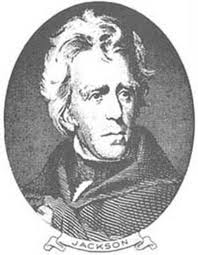 |
| Harvey Scott mini pedigree from Ancestry.com |
1826, Harvey Scott is born
I've not been able to find out anything about his parents, so as far as I can tell, this is as far back as his pedigree goes.
The first photographs, Joseph-Nicéphore Niépce succeeded in recording a light-sensitive image with silver chloride. His partial success was strengthened by his ongoing research into fixing the picture with a kind of asphalt. It was in 1826 that he was able to put a view of his workshop onto a pewter plate. -- The People History
1828, sister Lucretia Scott is born
 |
| Vintage Image, Baby Girl with Cap from AntiqueClipArt.com |
While I know she is born in this year, it is only because of the census records so far. I still know nothing about her parents.
Democratic Party Created, A faction breaks off from the older established Democratic-Republican Party to become the Democratic Party. In the 1828 Presidential Elections opponents of Andrew Jackson told all who would listen that Andrew Jackson was a "Stubborn Jackass" Jackson was proud of his reputation for stubbornness and even wanted to use it as a good quality, so started using a donkey on his campaign posters . Democrats have been using the symbol of the Donkey ever since. -- The People History
1829 Andrew Jackson is elected the seventh President of the United States
 |
| Andrew Jackson from The Jacksonian Era |
1830 - 1849 ages 2-23
I don't [yet] have any record of his childhood and young adult life. I can make some assumptions. If David is his father, he taught him how to be a mason, to lay bricks. Some things that happened in these two decades are as follows:
Michigan Became the 26th state, Michigan became the 26th state in The United States on January 26th , 1837. -- The People History
Wagon Trains Start The Journey To California, Covered Wagon Trains took immigrants on a journey from Missouri River towns to what is now the state of California. The trip was about 2,000 miles and each night the Covered Wagon Train would form a circle for shelter from wind and extreme weather, they would put all the animals in the center to prevent them from running away or being stolen by Native Americans. -- The People History
Massachusetts Child Employment Laws, Massachusetts became the first state to pass laws limiting how many hours a child laborer could be forced to work. The new laws limited a child under the age of twelve's workday to a maximum of 10 hrs. -- The People HistoryIn this time, six men became President of the United States: Martin Van Buren; William Henry Harrison; John Tyler; James Knox Polk; Zachary Taylor; Millard Fillmore.
Next up: Harvey Scott, 1850s or so, I may change my mind about the title.
Is this YOUR Scott ancestor? What would you like to learn more about? Let me know by commenting below or contacting me using the form on the right.
**********************************
Below is information from Ancestry.com's Historical Insights: Establishment of County Poorhouses
I thought it was relevant because I think several of the Scott people were in either poor houses, or placed their children in orphanages because they were unable to properly care for them.
 |
| One observer noted that many people, “sought to die in starvation rather than submit to what they regarded as the shame attending their admission into almshouses.” Credit: Buyenlarge/Archive Photos/Getty Images |
Establishment of County Poorhouses
“Going to the poorhouse” was not just a fear for many 19th-century Americans, it was a reality.
America was not the land of milk and honey for everyone during the Industrial Revolution. Countless thousands of people were forced into poverty and homelessness. Such unfortunates could even be sold at public auction to provide labor in exchange for room and board, a system called “outdoor relief.” Often, homeless Americans suffered from mental illnesses or disabilities that prevented them from working. With no public support, they relied on charity. Officials hoped that the creation of a tax-supported poorhouse, also known as almshouses or “poor farms,” would be a more humane—and cheaper—alternative. Most New England towns had at least one poorhouse, while cities such as Boston had several. The Massachusetts state almshouse sheltered almost one thousand people. One report found that the residences “are not at present well adapted to modern ideas of comfort and convenience,” and reports of meager food and conditions were not uncommon.








No comments:
Post a Comment